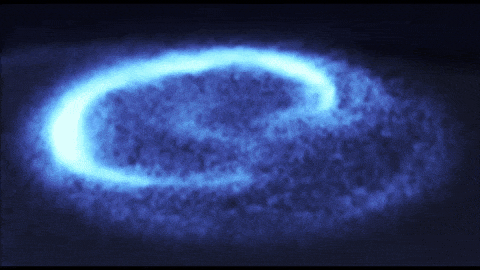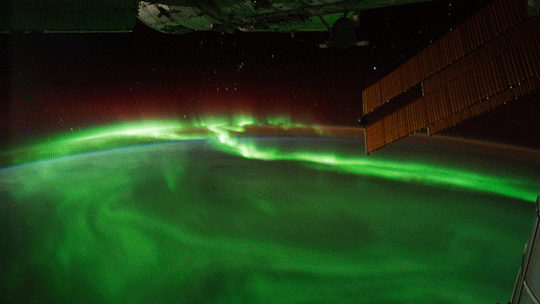Saturday, we head back to Jupiter's and experience the largest moon in our solar system — Ganymede, the only known moon with its intrinsic magnetic field!
The 6th movement is divided into two sections. The first half explores the scintillating science taking place at Ganymede and the second pays tribute to the famed Italian scientist, Galileo Galilei. So if you're a fan of some heady science, then these next seven days are for you!

We begin exploring Ganymedes' captivating science and start with its Magnetosphere.
Magnetospheres are regions controlled by the planetary bodies' magnetic field where fast-moving electrons originate. Magnetospheres occur between the bow shock and the magnetopause and they protect the planet from harmful radiation from the sun and interstellar space.

Ganymede also has a magnetosphere due to its magnetic field. Fast-moving particles flow from Jupiter's Magnetosphere, collide with Ganymedes polar regions, and penetrate its atmosphere.
The charged particles are explosively accelerated when Ganymede's magnetic field lines break apart and snap back together, releasing fast electrons. This causes the excited particles to react and produce the aurorae belts in Ganymede polar region.

GANYMEDE Aurorae
LIBRETTO extract
Emanating Jovian plasma Colliding!
Particles that explosively Dance upon the lunar ice caps
Auroras, propagating
Tangling and snapping of Magnetic field lines
The Aurora Borealis is one of Earth's finest examples of the magnetic field interacting with solar particles and produces the most majestic display of lights typically found at the poles when conditions are favorable for this cosmic natural light show to grace our skies.

Earth Magnetosphere International Space Station
We can thank the spectacular observations from the Hubble Space telescope in 2015 revealing Ganymede's aurora belts at the north and south poles. This discovery also gave the best evidence yet that, like Europa, Ganymede also contains a subsurface saline ocean buried under its 100km ice crust. Saturday we turn back to the sun and explore the Solar winds

EXPERIENCE the symphonic science of Ganymede
Musical excerpt Day 1
